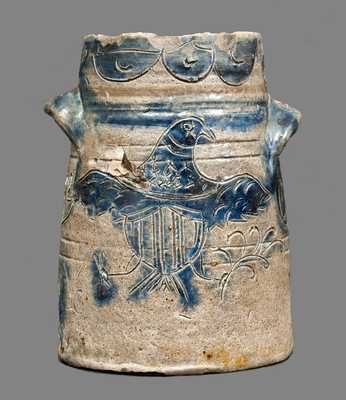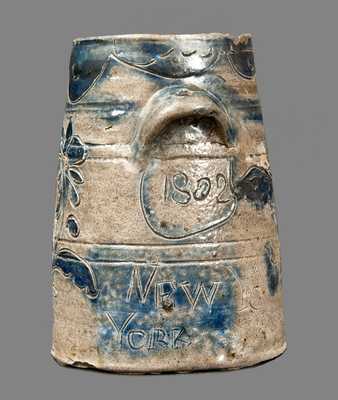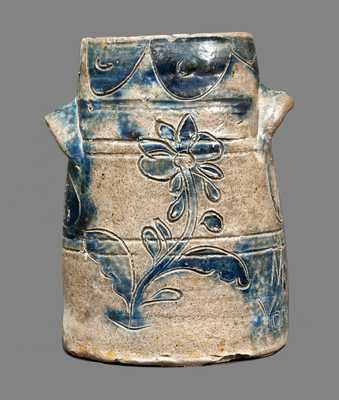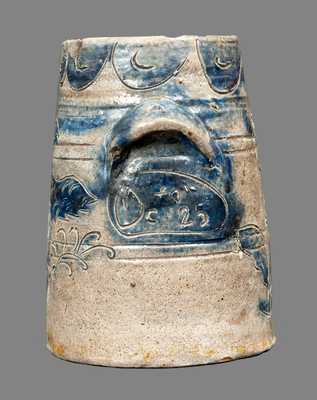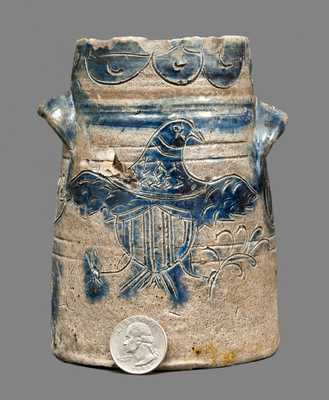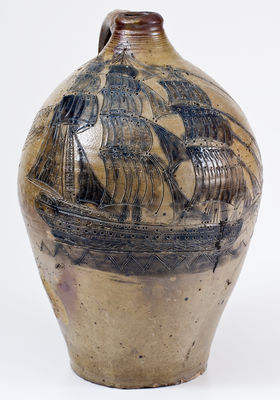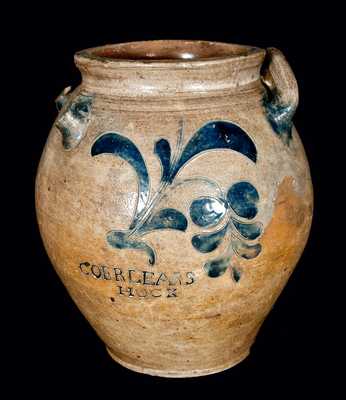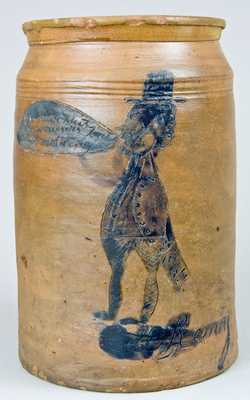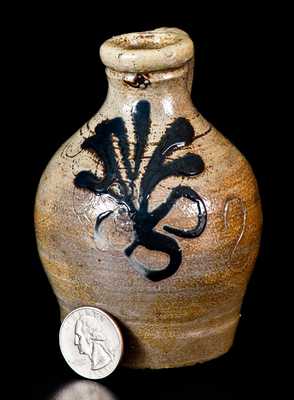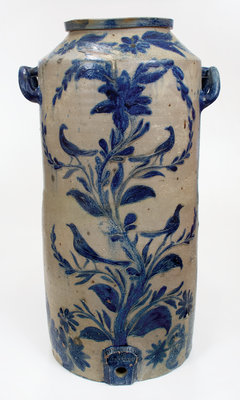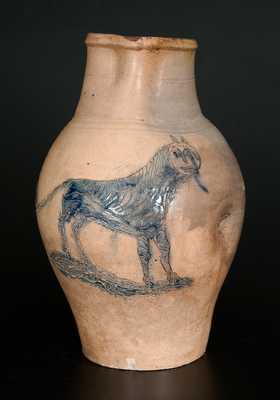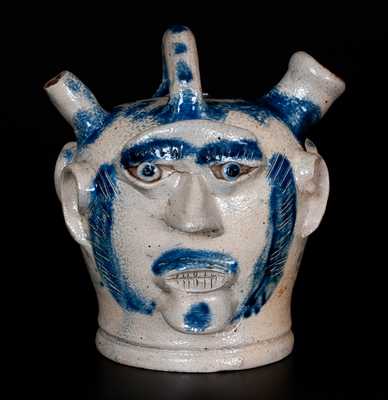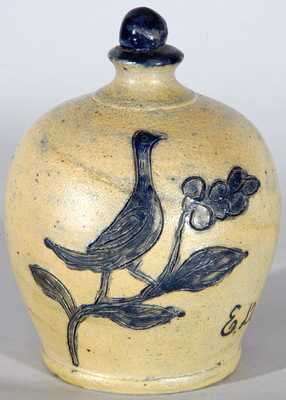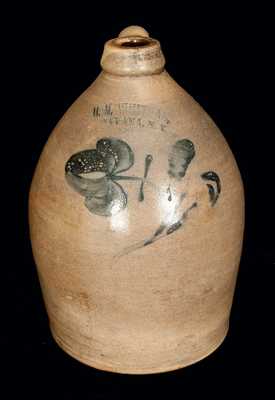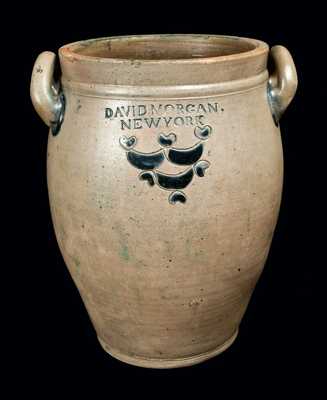Exceedingly Rare and Important Diminutive Stoneware Jar with Profuse Incised Decoration of a Federal Eagle, Incised "NEW YORK / Octr. 25 / 1802," Remmey or Crolius Family, Manhattan, NY, tapered jar with inset rim, incised banding, and large, semi-lunate handles with original holes. Front decorated with a large incised and cobalt-highlighted Federal eagle with striped shield across its chest and stars accenting its neck, the figure holding an olive branch and arrows in opposing talons. Reverse incised with a flower extending from a curved stem with splayed leaves, also highlighted in cobalt slip. Shoulder with incised and cobalt-highlighted drape design. Base incised in block letters "NEW YORK". Area below one handle incised with the date "Octr 25," overlain with heavy cobalt slip; opposite handle incised with the year "1802," also accented with cobalt slip. This important jar, recently found in the Southeastern U.S., is one of the most significant discoveries in Manhattan stoneware of the past several decades. Figural decorations of this quality are extremely rare on Manhattan stoneware products, as the vast majority of pieces produced in the city bear incised floral or simple brushed decorations. The eagle decoration on this jar is also believed to be the earliest depiction of a Federal eagle on an intact example of American stoneware, made twenty years after the eagle was chosen as a national symbol. This iconic image would become more widely popular among American stoneware potteries with incised work by the 1820s, followed by slip-trailed, brushed, stenciled, and molded designs from the 1830s until the end of the century. True to the Manhattan style is the floral design on the reverse, with distinctive splayed, scallop-edged leaves, most commonly associated with the Remmey and Crolius families of Manhattan. Variants of this design can be found on jars, jugs, and pitchers, bearing Clarkson Crolius, Sr. and John Remmey, III maker's marks. It is possible that this jar may have been made by a family member at either shop, or at the shop of another relative. The rare form and size of this example, reminiscent of extant Crolius fruit jars and Commeraw oyster jars, suggests it may have been used for canning purposes. Early Manhattan stoneware pieces of this quality rarely surface today. Most were gathered by early collectors and have resided for decades in the collections of the nation's most prominent museums, including the Metropolitan Museum of Art, the New York Historical Society, and the Smithsonian Institution. A highly significant recent discovery from the nation's most famous center of early stoneware production. Provenance: Recently found in the Southeastern U.S. Chipping to rim. Shallow chips to bottom edge, most or all of which likely occurred in the firing. Glazed-over iron ping to front. Tiny iron ping to end of one handle. 2" faint hairline from rim. Faint 1 1/4" line from rim on reverse, partially visible on interior. H 5 1/2".

